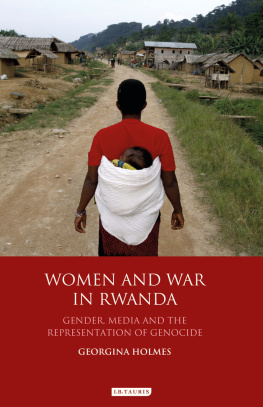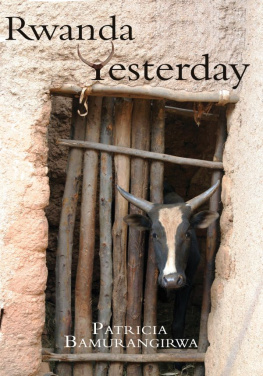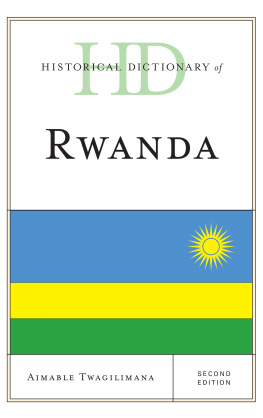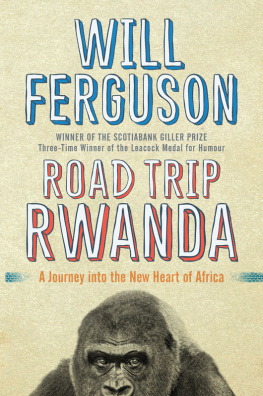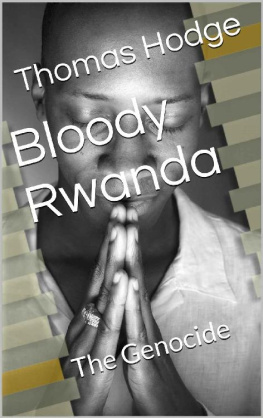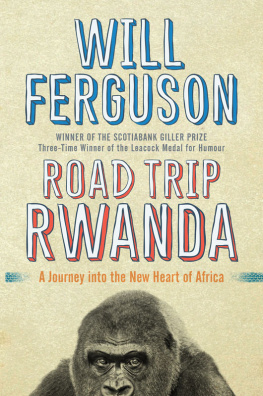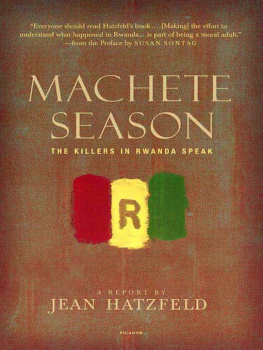
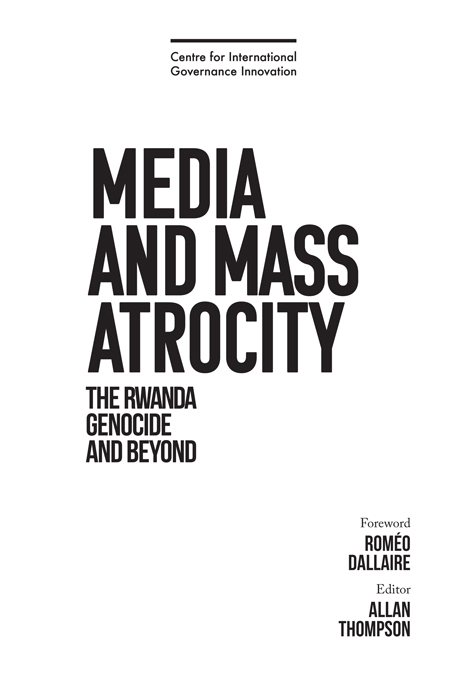
2019 by the Centre for International Governance Innovation
ALL RIGHTS RESERVED. No part of this publication may be reproduced, stored in a retrieval system or transmitted by any means, electronic, mechanical, photocopying, recording or otherwise, without the prior written permission of the publisher, application for which should be addressed to the Centre for International Governance Innovation, 67 Erb Street West, Waterloo, Ontario, Canada N2L 6C2 or .
ISBN 978-1-928096-72-6 (hardcover)
ISBN 978-1-928096-73-3 (paperback)
ISBN 978-1-928096-74-0 (ePUB)
ISBN 978-1-928096-75-7 (ePDF)
Library and Archives Canada Cataloguing in Publication
Title: Media and mass atrocity: the Rwanda genocide and beyond / Allan Thompson; foreword by Romo Dallaire.
Names: Thompson, Allan, 1963- author. | Dallaire, Romo, writer of foreword. | Centre for International Governance Innovation, issuing body.
Description: Includes bibliographical references.
Identifiers: Canadiana (print) 20189067004 | Canadiana (ebook) 20189067012 | ISBN 9781928096726 (hardcover) | ISBN 9781928096733 (softcover) | ISBN 9781928096757 (PDF) | ISBN 9781928096740 (HTML)
Subjects: LCSH: RwandaHistoryCivil War, 1994Mass media and the war. | LCSH: Mass media and ethnic relationsRwanda. | LCSH: RwandaHistoryCivil War, 1994Propaganda. | LCSH: GenocideRwanda. | LCSH: Genocide in mass media.
Classification: LCC DT450.435 .T46 2019 | DDC 967.57104/31dc23
Published by the Centre for International Governance Innovation (CIGI).
The opinions expressed in this publication are those of the authors and do not necessarily reflect the views of the Centre for International Governance Innovation or its Board of Directors.
Cover design by Sami Chouhdary and Melodie Wakefield. Page design by Melodie Wakefield.
Printed and bound in Canada, using 100% recycled stock, FSC certified.
Centre for International Governance Innovation and CIGI are registered trademarks.
Centre for International
Governance Innovation
Centre for International Governance Innovation
67 Erb Street West
Waterloo, ON Canada N2L 6C2
www.cigionline.org

FOREWORD
ROMO DALLAIRE
During the 1994 Rwanda genocide, in moments of despair, those of us who were on the ground in the United Nations mission I commanded often puzzled over the same question: what did the rest of the world know about the tragedy that was unfolding before us? What understanding of events in Rwanda were ordinary people back home and around the world gleaning from the news media coverage of the genocide?
In those days, we were early on in the era of 24-hour news and satellite television networks, led by CNN. And yet, during the nearly 100 days of horrific slaughter, CNN managed only once just once to broadcast actual news footage of a killing taking place, even though thousands and thousands of people were being killed in public every day. And that footage seemed to flicker across the TV screens and then disappear.
Perhaps the shocking images and stories from Rwanda didnt resonate because many people simply didnt understand what they were seeing. We knew so little about a place like Rwanda. Before the genocide, most of us couldnt even find it on a map. And in the months leading up to the beginning of the killing campaign, there was virtually no media coverage of the 1993 Arusha peace accord, the UN mission in Rwanda and the rising tension.
In hindsight, there were warning signs of the impending atrocities, but they simply didnt percolate into the media coverage. Hardly surprising, then, that when the violence did erupt, many people just didnt understand what they were watching, or believed they were seeing another example of tribal warfare in Africa, and not a systematic genocide.
And while we struggled to understand how or why the outside world didnt seem to be moved by what was happening in Rwanda despite the valiant efforts of a small cadre of brave journalists on the ground we also witnessed the perverse and highly successful use of media tools by those perpetrating the genocide. While conventional news media somehow failed to fully grasp what was happening in Rwanda, or, at the very least, failed to capture the attention of audiences back home, hate media outlets in Rwanda dominated the airwaves and successfully delivered a vile message of hate that contributed to the killing spree.
Looking back, the events in Rwanda in 1994 now seem like a textbook example of what can go wrong when media intersect with mass atrocity events such as the Rwanda genocide. What lessons have we learned? Perhaps more important, given the dramatic changes in the media landscape brought about by social media and other technological advances in communications, what do the lessons of Rwanda mean to us now, a quarter-century later?
I am glad to have participated in a round-table event hosted by Carleton Universitys School of Journalism and Communication in Ottawa, in early December 2017. Media and Mass Atrocity: The Rwanda Genocide and Beyond was a three-day gathering of minds, bringing together journalists, media and genocide scholars and even an old soldier like me, to puzzle over this question: 25 years after Rwanda, what do we know about the role of media during mass atrocity events? In the immediate aftermath of the Rwanda genocide, discussions about media focused on journalists and news organizations agonizing over their failure to fully capture what was happening on the ground. They also zeroed in on the role of hate media actors, such as Radio Tlvision Libre des Mille Collines and the magazine Kangura. But because social media as we now know it did not exist in 1994, we focused instead on the role of traditional media radio, TV, newspapers, magazines and wire services in covering the genocide.
Today, in an era saturated by social media, we can begin to perceive the lessons of Rwanda through a different prism. We recognize the hate media radio broadcasts as they are echoed by their social media counterparts and, as traditional news media grapple with a radically transformed media landscape, populated by new, unpredictable actors.
This valuable collection revisits the case study of Rwanda, but also examines how media and mass atrocity have intersected in such varied settings as Darfur, the Central African Republic, Myanmar, South Sudan, Syria and beyond.
A quarter-century after Rwanda, we still have so much to learn.

ACKNOWLEDGEMENTS
The French philosopher Voltaire wrote, We owe respect to the living; to the dead we owe only truth. When confronted by the human species at its worst, journalists often struggle to find and define that truth, to give perspective to our world and to do justice to the dead. And increasingly, media professionals find themselves at cross purposes with others who use media tools and who also inhabit that space where media and mass atrocity intersect.



